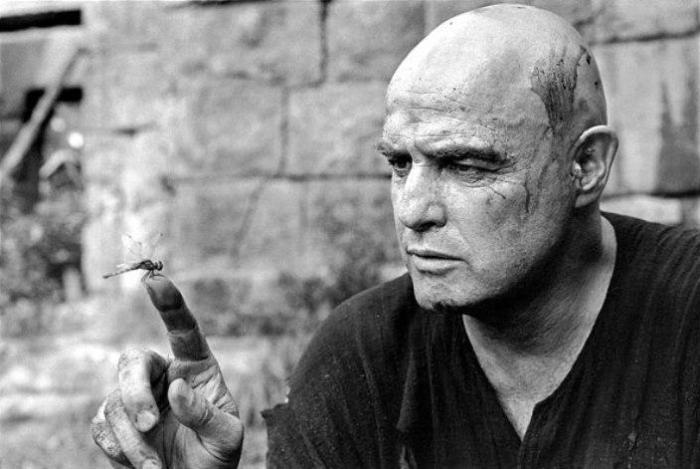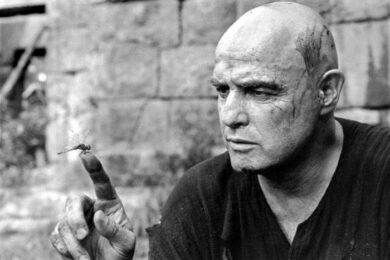Recently, acclaimed director and noted crazy person Werner Herzog held classes teaching people how to make movie his way. This included tutorials on lock-picking and permit-forging, just as a couple of examples. This mentality may lead to a filming experience that is less than ideal but it also leads, on many occasions, to some great movies. Below, we’ll look at a list of movies that, for one reason or another, were made under seriously difficult conditions. As you’ll see, most of them turned out all right.
Apollo 13
Instead of trying to simulate weightlessness for the scenes aboard the Apollo 13, Ron Howard decided to make weightlessness actually happen for his cast. Now, short of shooting the production into space, the only was to do that is onboard a reduced gravity aircraft, which flies in extreme parabolas that induce weightlessness for about 35 seconds at a time. The nickname for this kind of aircraft is a Vomit Comet, so it’s remarkable that the cast, who flew 612 such parabolas over the course of filmmaking, had anything left to give. Literally.
Slumdog Millionaire
By all accounts, the slums of Mumbai are a world unto themselves. They move with great energy and speed, and they move constantly. So the idea of bringing anything as large and structured as a movie shoot, particularly one helmed by foreigners, is so daunting and possibly dangerous. Danny Boyle, however, felt he had an obligation – maybe to his film, maybe to the actual slum kids in his cast, probably both – to be honest and visceral and to shoot in the heart of it all. Maybe if he had taken the same approach to Sunshine and actually shot in space, he’d be first on this list.
Blue
Derek Jarman was always a challenging filmmaker but at the end of his life, when complications from AIDS were pulling him into blindness, he decided to challenge himself as well as the viewer. He made a feature-length film that recounted his life and his work that consists entirely of a blue screen and the voices of himself and his friends and collaborators. The most amazing thing about this film is not that it exists, but that it’s so compelling to watch.
Apocalypse Now
I could recount here the things that made Apocalypse Now (heart attacks, money hemorrhaging, Marlon Brando) but you can see all that in the documentary Hearts of Darkness. And if you haven’t seen that, you really should. What you’ll see there is the tale of a man with a runaway vision, and endless supply of money and no one to tell him no. In 99 out of 100 cases, this would lead to a disaster. I mean, check out the four hour director’s cut of Heaven’s Gate. Or, actually, don’t. But what Francis Ford Coppola ended up with is a masterpiece that dangles over the precipice of incoherent insanity but manages, somehow, to keep its balance.
Fitzcarraldo
Just as Apocalypse Now was documented in Hearts of Darkness, Werner Herzog’s Fitzcarraldo has Burden of Dreams as proof of its director’s lunatic drive and commitment to cinematic honesty. Fitzcarraldo is the story of a man who has a 320 ton steamship moved over a mountain. In order to make this look like it was really happening, Herzog had a 320 ton steamship moved over a mountain. And just so it wouldn’t be too easy, Herzog cast raving madman Klaus Kinski in the lead role. More on him in just a second.
Aguirre, the Wrath of God
In Herzog and Kinski’s first collaboration, the actor’s tendency toward the insane was put to good use, as his titular character’s grip on reality is tenuous to begin with and only gets looser as the film progresses down the Amazon river in Peru. That path was followed not only by the film but also by the people making it. Not only shooting but living and sleeping in the hot jungle no doubt lends to the feverish intensity of the finished product. It doesn’t hurt, of course, to have the embodiment of feverish intensity playing the main character too.
Guess Who’s Coming to Dinner
A softer, and much sadder, version of actor-related difficulties plagued the production of Stanley Kramer’s Guess Who’s Coming to Dinner. The role of the white girl’s father was played by the great Spencer Tracy in the last days of his life. His health was failing drastically and Kramer and co-star Katherine Hepburn put their salaries in escrow when insurance for Tracy was refused. He was dying but none of that is onscreen. His performance is elegant and nuanced, and one his all-time best. The film may not have been perfect but Tracy was.
The Island of Dr. Moreau
Later in his life, and as referenced before, Marlon Brando gained a reputation for being increasingly difficult to work with. He would refuse to learn his lines and disagree with directors constantly. So in order to overshadow one of the greats in the difficult-to-work-with department, Val Kilmer had to really act like a prick. For a decade afterward, Kilmer would carry around the label of on-set headache and he owes it almost completely to his behavior on this film. Before filming even began, he demanded that his role be cut severely. And as far as what happened during production, we may never know the details but we do know that veteran director John Frankenheimer proclaimed that there were two things he knew he would never do in his life: climb Mount Everest and work with Val Kilmer again. And that guy worked with the notorious monstrous Angela Lansbury.
Cannibal Holocaust
Right off the bat, I want to make it clear that I’ve never seen Cannibal Holocaust and I probably never will. I’m not saying I think it’s a bad film. I just don’t think I have the stomach for it. Apparently, a lot of people involved in the movie felt the same way. The director, filming, like Aguirre, on location in the remote jungle, had to drag his actors kicking and screaming into performing scenes of genuine animal torture. Meanwhile actors were dropping or taking leave to attend the funeral of a murdered relative. A back-story like that of Cannibal Holocaust likely would have made the film notorious even before it was banned left and right in nations across the world. Maybe someday someone will make a movie about the production itself and leave out the animal torture. That I would definitely see.
The Ghost Writer
For all we know, the actual production of Roman Polanski’s newest film, The Ghost Writer went as smoothly as can be. It’s the post-production where the film became, um, entangled. In case anyone is unaware, Polanski was arrested on a 32 year old charge of unlawful sexual intercourse with a minor. While the Hollywood circus leapt into high gear, with delusional filmmakers lining up to defend the man for this unthinkable act, Polanski oversaw the editing of the final product while under house arrest. While there’s every chance The Ghost Writer could be a fine film, it deserves a place on this list because it will likely never be viewed outside of the harsh light of its maker’s long-deserved shaming.
To read David Bax’s Battleship Pretension blog, click here. To read his last film feature for The Quietus, click here.



